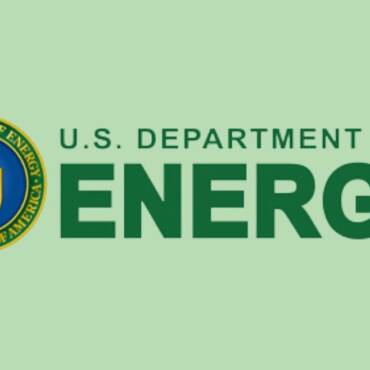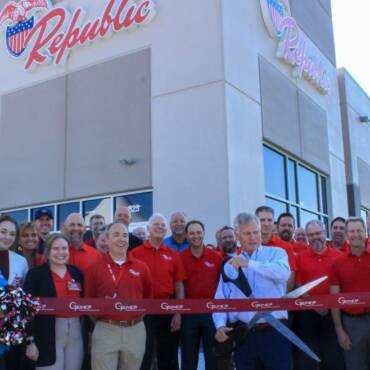As the refrigerant transition takes place this year, what are the benefits of transitioning to A2L refrigerants, and what are the impacts on the residential air conditioning industry? The benefits include environmental stewardship, U.S. job creation, and maintaining the U.S. position as the global leader in developing new technologies for the HVACR industry. There are challenges for all stakeholders; however, the focus of this article will be on OEMs, distributors, and contractors.
Benefits
The primary benefit of this transition is environmental stewardship. A2L refrigerants have lower GWPs versus the commonly used A1 refrigerants of today (e.g., R-410A). GWP defines the potency of a greenhouse gas by comparing it to CO2, which has a GWP of 1. In other words, the higher the GWP of a given gas, the more potent the gas is relative to warming the planet. For example, R-454B is an A2L refrigerant that will have a substantial presence in the market starting in the latter half of this year. R-454B has a GWP of 465, which means it is 465 times more intense than CO2 in terms of global warming. However, R-410A has a GWP of 2,088.
The EPA estimates this transition will reduce greenhouse gas emissions by as much as 876 million metric tons on a CO2 equivalent basis through 2050. On average, this equates to approximately 35 million metric tons per year over 25 years. For calendar year 2022, the EPA estimates that the U.S. emitted 6,340 million metric tons on a CO2 equivalent basis, of which 13% was from commercial and residential buildings. That means approximately 824 million metric tons were from commercial and residential buildings in 2022. Based on EPA’s data, we can conclude that going to A2L refrigerants will reduce direct emissions from commercial and residential buildings by approximately 4.2% per year on average over 25 years.
Experts in the industry also report that transitioning to lower-GWP refrigerants is expected to increase U.S. manufacturing jobs by 33,000 by 2027. In addition, U.S. exports are expected to increase by $5 billion, and imports are expected to be reduced by $7 billion — thereby, improving the U.S. HVACR balance of trade.
The U.S., along with 159 other countries, have ratified the Kigali Amendment to the Montreal Protocol, which is the overarching international treaty that is driving the transition to lower-GWP refrigerants. If the U.S. were to not progress forward with this transition, we would risk technologically falling behind the global market for HVACR equipment. The U.S. has always been the technology leader, and moving forward with this transition maintains our leadership position and provides the U.S. with the ability to win a substantial amount of the projected $1 trillion global market for HVACR equipment.
Challenges
The impact of the refrigerant transition on OEMs is substantial. Per ASHRAE Standard 34, the A2L classification indicates a mildly flammable refrigerant; therefore, OEMs must redesign their equipment to meet the requirements of a new safety standard, UL 60335-2-40, which has replaced UL 1995 as the safety standard for household electrical appliances.
This new standard requires the development and deployment of leak detection sensors to mitigate any flammability hazard should a refrigerant leak occur. In the event a leak is detected by the sensor, the circulation fan is energized, any zoning dampers are opened, and all electric-resistant heat and the compressor are de-energized. This protocol ensures the leaking refrigerant concentration in air is reduced below the lower flammability limit (LFL) of the refrigerant, thereby mitigating any flammability hazard.
For distributors, it’s all about timing and inventory. Distributors will need a thorough understanding of the transition timing by product category so that they can manage their inventory. The governing regulation is EPA’s Technology Transition rule, and the best source of information is the EPA factsheet for this rule.
Because of the complexity of residential and light commercial air conditioning and heat pumps, an explanation of this category is appropriate. The factsheet provides a table for “products” and a table for “systems.” EPA defines a product as “functional upon leaving the factory,” and this includes equipment like single package units. A system is defined as an appliance that is “assembled and charged in the field using multiple components.” The best example of a system is a unitary split air conditioner or heat pump combined with an indoor coil or air handler.
It’s also important to understand what the EPA considers to be a component, because the EPA is not restricting the manufacture, import, sale, distribution, or export of components that are used to repair existing systems. When utilized to repair an existing system, EPA considers indoor and outdoor unitary equipment as components. This suggests that R-410A equipment can be manufactured indefinitely if it is used to repair an existing system, more to follow on this.
For products, EPA has banned the manufacturing and import for equipment above 700 GWP on January 1, 2025. However, products (e.g., package units) manufactured or imported prior to January 1, 2025, can be installed for three years or until January 1, 2028.
For systems, the EPA has banned the installation of complete systems with a GWP above 700 on January 1, 2025. Through an additional rulemaking, EPA has clarified and allowed the installation of new systems until January 1, 2026, if the components that make up the system were manufactured or imported prior to January 1, 2025.
Let’s examine the notion that components can be manufactured indefinitely per EPA regulations. Although EPA regulations allow this to occur, the Department of Energy (DOE) has taken an interest in this activity and addressed this in a recently published notification of proposed rule on the test procedure for central air conditioners and heat pumps. DOE has clarified that it will only certify R-410A systems post January 1, 2025, through a procedure known as “outdoor unit with no match” (OUWNM). This pathway to certification severely restricts the size of the indoor coil that is permitted to be rated with air conditioners and heat pumps. The practical outcome of this clarification is that it is extremely likely that most, if not all, manufacturers will cease the manufacturing of R-410A components (outdoor units) by January 1, 2025.
For contractors, the best way to confirm these systems are installed safely and correctly is to ensure compliance with ASHRAE Standard 15.2 and the OEM’s installation instructions. This cannot be overstated: contractors must read, understand, and implement the requirements contained in both documents.
While transitioning to A2L refrigerants offers benefits including environmental stewardship and U.S. job creation, all stakeholders will be impacted by the change. OEMs must redesign their equipment per new safety standards, distributors must manage their inventory throughout the transition, and contractors must install the equipment per new requirements detailed in the OEM’s installation instructions and ASHRAE 15.2.
Whether you require installation, repair, or maintenance, our technicians will assist you with top-quality service at any time of the day or night. Take comfort in knowing your indoor air quality is the best it can be with MOE heating & cooling services Ontario's solution for heating, air conditioning, and ventilation that’s cooler than the rest.
Contact us to schedule a visit. Our qualified team of technicians, are always ready to help you and guide you for heating and cooling issues. Weather you want to replace an old furnace or install a brand new air conditioner, we are here to help you. Our main office is at Kitchener but we can service most of Ontario's cities
Source link




Add Comment